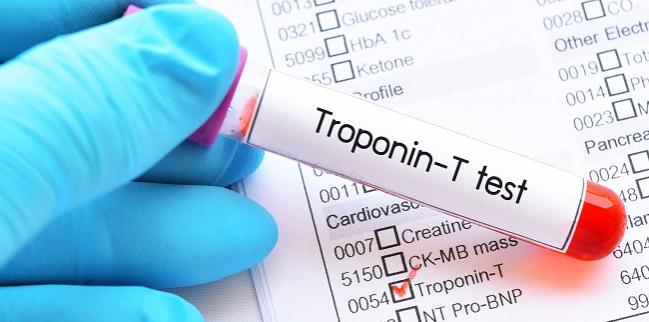Community Death Rates Following Type 2 MI Speak to Lack of Treatments, Trials
The challenge in treating T2MI lies in identifying the underlying trigger.

Rates of type 1 myocardial infarction (T1MI) have markedly declined as compared with rates of type 2 MI (T2MI), such that by the end of a new study's 10-year reporting period rates of both types of events were similar. But mortality following T2MI was higher over the course of time, driven by early mortality as well as noncardiovascular deaths, a finding the authors say has important implications for research and practice.
“These findings underscore the healthcare burden of T2MI and provide benchmarks for clinical trial design,” write Claire E. Raphael, MBBS, PhD (Mayo Clinic, Rochester, MN), and colleagues, who add that the results reinforce the need to find evidence-based strategies for managing the disease.
The study, published online this week ahead of print in Circulation, provides “important insights on the evolution of type 2 myocardial infarction,” Thomas Nestelberger, MD (University Hospital Basel, Switzerland), who was not involved in the research, told TCTMD. “They also used very good methods to adjudicate type 1 and type 2 myocardial infarction according to the current version of the Universal Definition.”
Defining T2MI in practice, and in particular differentiating T2MI from myocardial injury, has come under fire in recent years, but this paper—in keeping with the Fourth Universal Definition of MI paper released in 2018—uses the following:
- T1MI: presumed to result from a spontaneous primary atherosclerotic coronary event
- T2MI: secondary to a decrease in myocardial oxygen supply or increase in myocardial oxygen demand not due to acute atherothrombosis
“A major challenge in the study of T2MI is that ascertainment of diagnosis cannot be readily operationalized,” the authors write.
Treatment for T1MI are “very clear” and backed up by guidelines, Nestelberger noted, but when patients are diagnosed with T2MI, treatment can be a bit more complicated. “We have to look for the underlying trigger for having an MI and we have to treat the trigger, but we also have to look at their probability for having coronary artery disease. So patients who have previously known coronary artery disease may need more secondary prevention. . . . But in patients without known coronary artery disease and now presenting with a type 2 MI, we should test their pretest probability for having an MI and probably perform an invasive or noninvasive [test for CAD],” he said.
T1MI vs T2MI
Raphael and colleagues looked at 5,460 residents of Olmsted County, MN, without prior MI who experienced an event associated with a serum cardiac troponin T concentration above the 99th percentile of a normal reference population (≥ 0.01 ng/mL) between 2003 and 2012. In total, 1,365 were classified as index T1MI and 1,054 as T2MI.
While the annual per patient incidence of T1MI decreased by more than half from 202 to 84 per 100,000 persons over the study period (P < 0.001 for trend), the incidence of T2MI declined from only 130 to 78 per 100,000 persons (P = 0.02 for trend).
After adjustment for age and sex, those with T2MI had a significantly higher rate of all-cause mortality at a median follow up of 5.5 years compared with those diagnosed with T1MI (52% vs 31%; P < 0.001), and this was driven by higher rates of early and noncardiovascular mortality. Interestingly, rates of cardiovascular mortality were similar at around 20% at 5 years (P = 0.11). On multivariate analysis, T2MI independently predicted all-cause but not cardiovascular mortality (HR 1.4; 95% CI 1.2-1.6).
“This may highlight that patients with type 2 MI are not suffering mainly from cardiovascular problems but also have many other problems,” Nestelberger observed.
When the researchers subclassified T2MI by etiology, those with the principal provoking mechanism of arrhythmia had a more favorable prognosis than those triggered by post-operative status, hypotension, anemia, and hypoxia. Also, those with multiple provoking factors had a worse prognosis compared with those who had only a single trigger (HR 1.39; 95% CI 1.19-1.61).
“These findings underscore that T2MI is not a single entity, rather a group of phenotypic clusters based on underlying mechanisms of mismatch,” Raphael and colleagues write. “The current study is therefore an important step forward in T2MI, providing event rates for trial design and indicating that treatment strategies should take into account outcomes according to sub-classification.”
Also, patients with T2MI were more likely to have a recurrent T2MI within 5 years (9.7%) compared with a new T1MI (1.7%).
High-Sensitivity Assays
While the researchers acknowledge the limitation that the study period was before the transition to use of high-sensitivity troponin assays, “the impact of newer assays on incidence of T1MI and T2MI requires further study.”
Nonetheless, Nestelberger said future trials should employ high-sensitivity assays. “With a high-sensitivity cardiac troponin [test], we'll be able to measure it also in patients with only a mild elevation of troponins a little bit above the 99th percentile, and this will help to identify more patients with small MIs—type 1 MIs of course, but also patients with small elevation and type 2 MI,” he said. “Current guidelines are providing enough data that we should use a high-sensitivity assay whenever possible and not the conventional one as done in this study.”
Yael L. Maxwell is Senior Medical Journalist for TCTMD and Section Editor of TCTMD's Fellows Forum. She served as the inaugural…
Read Full BioSources
Raphael CE, Roger VL, Sandoval Y, et al. Incidence, trends and outcomes of type 2 myocardial infarction in a community cohort. Circulation. 2020;Epub ahead of print.
Disclosures
- Raphael and Nestelberger report no relevant conflicts of interest.


Arreka Jorkman